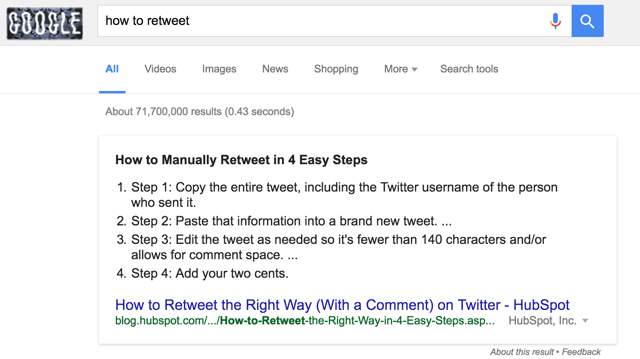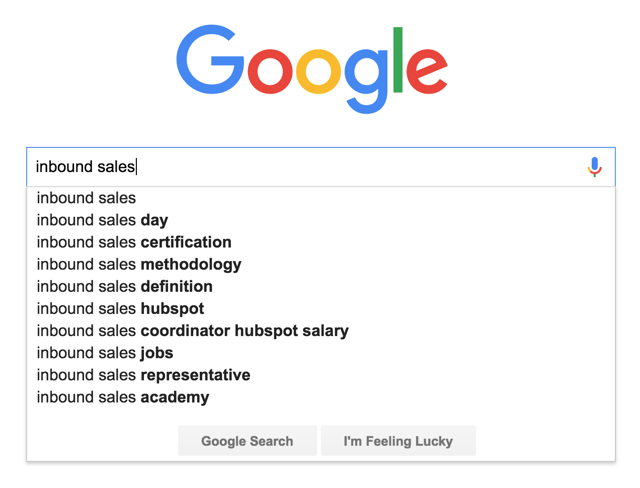The Search Engines Are Changing Updates to the way that the search engines are processing and evaluating content have been tied heavily to the approaches that content publishers have been taking to get results. One of the ways in which content producers will evaluate the performance of content is by looking at keyword rankings within the search engines. Outside of keyword ranking problems, the search engines have also been dictating how content should be structured, most notably with the increased appearance of featured snippets. The reality is that content ranking within the featured snippet section often gets a much greater share of the traffic for the given query when compared to non-featured snippet SERPs. The way that we approach this at HubSpot is to look at our visibility across a topic, as opposed to a specific keyword. What is a Topic Cluster? The role of the pillar content is to cover the core topic broadly and also perform well at converting visitors into leads (or whatever your conversion goal is). Tools work particularly well for pillar content because they’re often evergreen content and get shared a lot. This content will drive traffic to the pillar content and push positive link signals to the search engines in the process, increasing both the organic search visibility and leads generated from the overall topic cluster. Build out each of the core topic with subtopics using keyword research.

Content marketing has seen a lot of changes over the past few years, in particular around the way that marketers have gone about actually developing their content. A lot of this has come down to the rapidly evolving search engine landscape, as well as a huge shift in the way that people are discovering content.
All that said, I still hear the same pain points coming from content producers that I did over five years ago:
“I struggle to measure the ROI of the content I create.”
“We create great content but we still don’t seem to rank high in
Google for our target keywords.”
“So, I’ve done my keyword research. Now what?”
As a response to these problems -- in particular the second one -- a lot of marketers will respond with increased content output. Unfortunately, creating larger volumes of the same underperforming content will often result in the same underwhelming results -- just at a greater expense.
The answer to these problems spans way beyond the number of blog posts being pushed out each week; the real problem lies in the way that most content strategies are being developed.
The Search Engines Are Changing
Updates to the way that the search engines are processing and evaluating content have been tied heavily to the approaches that content publishers have been taking to get results.
One of the ways in which content producers will evaluate the performance of content is by looking at keyword rankings within the search engines. There’s been a lot of debate around the actual credibility of keyword rankings as a metric, and the reason for this largely stems from the fact that rank changes depending on context.
To put it simply, depending on how and where you’re searching from, you’ll see different search results.

A simple search for the term, “where to eat pizza” illustrates this perfectly. If you’re searching for this query from Boston then you’ll receive a completely different set results compared to someone searching in San Francisco. In fact, the results page for this query probably has thousands of different variations at any one moment in time.
With this in mind, how do you accurately determine your ranking for this keyword?
Outside of keyword ranking problems, the search engines have also been dictating how content should be structured, most notably with the increased appearance of featured snippets.

Google has been rolling out more and more featured snippets within the search results that try to answer the question that the searcher has without needing to navigate through to the content.
The reality is that content ranking within the featured snippet section often gets a much greater share of the traffic for the given query when compared to non-featured snippet SERPs.
Publishers now have to restructure their content to try and appear within these featured snippets, of which Wikipedia reigns supreme -- owning an estimated 17.2% of all featured snippets.
On a more general level, Google in particular has been making big investments in machine learning and has introduced ‘RankBrain’ into the core algorithm it uses to index and rank content. Ultimately, RankBrain enables Google to better understand the intent behind specific queries without the search query explicitly stating them -- all with the goal of providing more relevant results to the searcher.
This leads nicely onto the next big change in search: the searcher.
The Searcher is Changing
More significant than the way in which the search engines themselves are evolving is the way that the searcher is communicating with the search engines.
Amplified by the rise of mobile and voice search, queries have become more and more conversational. Google’s updates over the past 2-3 years have focused on understanding these types of queries better through natural language processing, most notably with the rollout of Hummingbird.
Google’s CEO, Sundar Pichai, announced in May that that 20% of queries on its mobile app and on Android devices are voice searches.
The takeaway here for marketers? The traditional view of ‘keywords’ in search has changed. Where there were maybe 10-20 ‘big keywords’ that would be sought after for ranking within a topic, there are now hundreds or thousands of long-tail variations that are regularly searched within a topic.
Content Strategy in 2017 and Beyond
Considering the advancements in the ways that both the search engines are evolving and the way that searchers are communicating with them, there needs to be a shift in the way we align our content strategies -- especially if organic search is a channel you’re focused on.
The way that we approach this at HubSpot is to look at our visibility across a topic, as opposed to a specific keyword. Through building content within topic clusters, we’re able to capture a large amount of search traffic across an ever-increasing pool of relevant keywords/phrases, as well as creating a strong affinity of a topic against our brand.

A...
COMMENTS